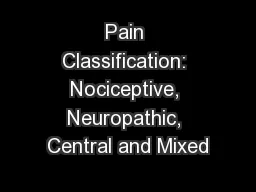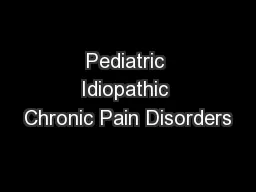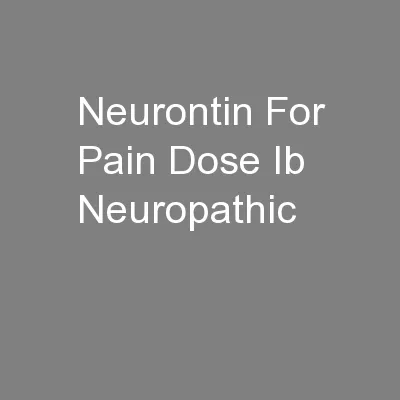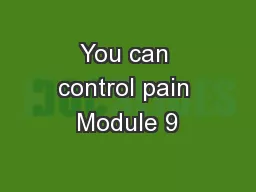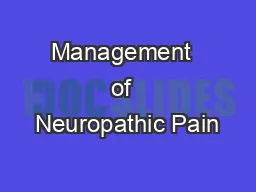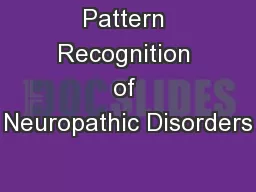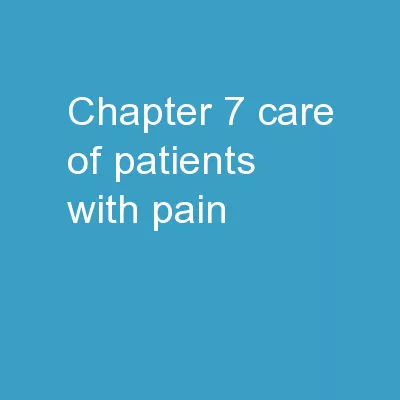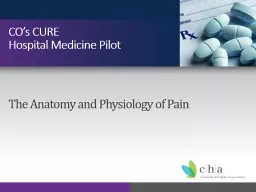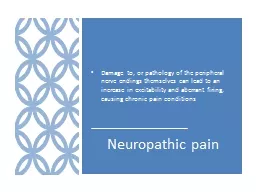PPT-Pain Classification: Nociceptive, Neuropathic, Central and Mixed
Author : lindy-dunigan | Published Date : 2018-02-19
Rachael Rzasa Lynn MD Chronic Pain Zoom Webinar 2 December 2015 Definitions Most basic neurophysiologic classification based on presumed mechanism of pain Simplified
Presentation Embed Code
Download Presentation
Download Presentation The PPT/PDF document "Pain Classification: Nociceptive, Neurop..." is the property of its rightful owner. Permission is granted to download and print the materials on this website for personal, non-commercial use only, and to display it on your personal computer provided you do not modify the materials and that you retain all copyright notices contained in the materials. By downloading content from our website, you accept the terms of this agreement.
Pain Classification: Nociceptive, Neuropathic, Central and Mixed: Transcript
Download Rules Of Document
"Pain Classification: Nociceptive, Neuropathic, Central and Mixed"The content belongs to its owner. You may download and print it for personal use, without modification, and keep all copyright notices. By downloading, you agree to these terms.
Related Documents

